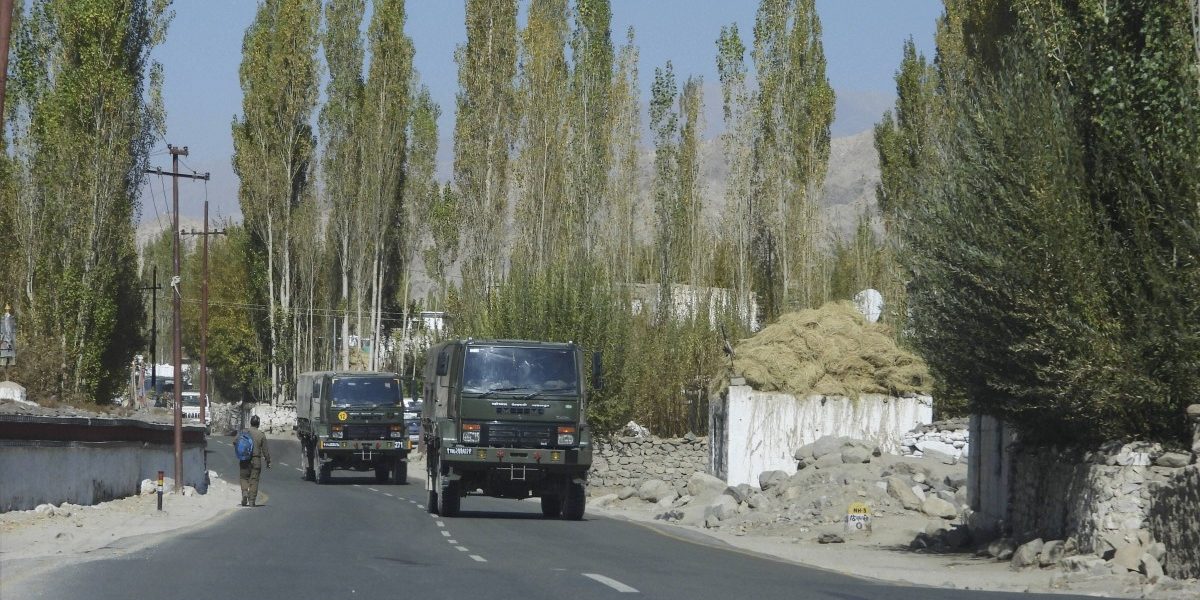deployment along the Line of Actual Control and asserted that ‘Quad’ was to be basis for a ‘Indo-Pacific NATO’.
The talks were also held after last week’s Quad ministerial meeting of foreign ministers of India, Japan, Australia and United States – which the Chinese foreign minister Wang Yi described as a ‘mini-Nato’ during his official visit to Malaysia on Tuesday.
On Monday, India and China held the seventh round of senior commander talks aimed at drawing up a plan to “disengage” troops from the frontline, where they have in stand-off at multiple points in eastern Ladakh.
The Indian Ministry of Defence issued a joint press release on Tuesday evening, followed by China’s defence ministry spokesperson releasing identical remarks.
“They were of the view that these discussions were positive, constructive and had enhanced understanding of each other’s positions,” said the joint statement.
Stating that diplomatic and military communication will remain open, “both sides agreed to earnestly implement the important understandings reached by the leaders of the two countries, not to turn differences into disputes, and jointly safeguard peace and tranquility in the border areas”.
One of the five ‘principles’ agreed by the two foreign ministers during their meeting in Moscow on September 10 was that the border troops should “continue their dialogue, quickly disengage, maintain proper distance and ease tensions”.
However, with the word ‘disengagement’ missing from the joint press release, it seems that there has been no breakthrough in the seventh round.
A day after the talks, Chinese foreign ministry spokesperson Zhao Lijian again blamed India for acting as the provocateur by boosting up its infrastructure in the border.
The Chinese diplomat’s statement was in reply to a question about Indian defence minister inaugurating forty-four bridges, most of which were aimed at improving troop movement along the India-China border.
“For a while, the Indian side has been stepping up infrastructure building and military deployment along the border with China. This is the root cause of tensions,” said Zhao.
He claimed that the “consensus reached by the two sides recently” was that neighbour side should not take any action that might complicate the situation at border.
“We urge the Indian side to earnestly implement the consensus reached by the two sides, refrain from taking actions that will complicate the situation, and take concrete measures to safeguard peace and tranquility along the border,” said Zhao.
He also reiterated that China doesn’t recognise the union territory of Ladakh or Arunachal Pradesh.
China has been repeatedly raising infrastructure build-up by India in recent media briefings. On September 29, Chinese foreign office spokesperson had objected to reports that India was building an all-weather road in Ladakh. When pointed out that China has been constructing infrastructures on its sides of LAC for years, he claimed that such reports on new facilities and military bases by China are “completely false”.
Meanwhile, Chinese state counsellor and foreign minister Wang Yi took a swipe at the ‘Quad’ grouping during his visit to Malaysia.
According to his remarks uploaded by the Chinese foreign ministry, Wang said that US’ strategy was to build a new ‘NATO’ for the Indo-Pacifc, with the Quad at its basis.
“In essence, [the Indo-Pacific strategy] aims to build a so-called Indo-Pacific NATO underpinned by the quadrilateral mechanism involving the United States, Japan, India and Australia,” Wang said, as reported by South China Morning Post.
The term ‘mini NATO’ for the Quad had been previously used by the Chinese vice foreign minister Luo Zhaohui during a seminar last month.
Wang asserted that the US strategy is to “trumpet the Cold War mentality and to stir up confrontation among different groups and blocs and to stoke geopolitical competition”. “What it maintains is the dominance and hegemonic system of the United States,” he added.
The senior Chinese official described the US’ Indo-Pacific policy as a “big underlying security risk”. “If it is forced forward, it will wind back the clock of history,” he said.
While all the four countries in the Quad have strong bilateral military linkages, they have not yet come together on a military platform.
When China had first started to use descriptors ‘mini NATO’ for Quad, US deputy secretary of state Peter Biegun cautioned against giving credence to “loose talk about an Indo-Pacific NATO and so on”. “I’d just be very careful to not define it (Quad) solely as an initiative to contain or to defend against China. I don’t think that’s enough,” he said during an online webinar on August 31.
In his opening remarks at the Quad ministerial meeting in Tokyo, Secretary of State Mike Pompeo had called on his counterparts to “collaborate to protect our people and partners from the CCP’s [Chinese Communist Party’s] exploitation, corruption, and coercion”.
This line was further pushed by Beigun during a track 1.5 US India forum meeting in New Delhi on Monday evening, which was co-chaired by Indian foreign secretary Harsh Shringla. “We have been too cautious (with regard to the Quad),” Beigun said, adding that it was largely due to the countries worried about a possible negative reaction from China.


























































































